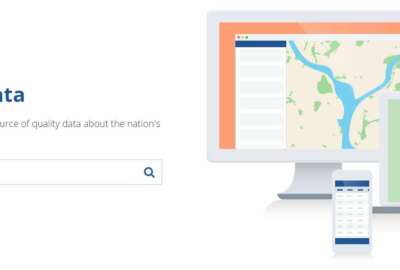
Watchdogs worry Census 2020 headed for inaccurate results, higher price tag
The Census Project warns underfunding the 2020 Census will mean hundreds of billions of dollars' worth of negative state impacts.
What do pickles, paper and pencils, and pound foolishness have in common?
They’re all words used to describe the status of the 2020 Census: problematic.
Phil Sparks, co-director of The Census Project, told Federal News Radio that the Census Bureau needs full funding if it hopes to produce an accurate count that will guide more than a half-trillion-dollars in federal funding to states.
“The first job of the constitutionally mandated decennial census is to count in place every resident of this country for purposes of congressional reapportionment and in-state redistricting of legislative bodies, but a second critical function of census data is to guide the disbursement by the federal government of nearly $600 billion a year to state and local governments, for federal dollars to support such programs as Medicaid, Medicare, highway construction, school lunch programs, public housing and Head Start,” Sparks said. “This is data that’s gathered by the decennial census, so if the census is off in 2020, it means that the template for the distribution of this data will be sticking around for 10 years and it will be off, too. So there’s a real relationship between these billions of dollars that flow from the federal government each year, and so-called formula funds and state and local government programs that depend on this money in order to service their citizens.”
According to a new report from the Counting for Dollars Project, in fiscal 2015, states received $590 billion from 16 “large census-guided programs.”
The study, led by George Washington University professor Andrew Reamer, indicated 15 of the 16 programs relied on data from the 2010 count.
“The fair and equitable distribution of federal financial assistance to governments and households in each state will depend on the accuracy of the 2020 Census,” Reamer said in a statement.
More oomph
That accuracy is what has the Census Project and other watchdogs worried about the 2020 count.
Comptroller General Gene Dodaro said during an Aug. 23 National Academy of Public Administration event in Washington, D.C., that the 2020 Census made the Government Accountability Office’s High Risk List for 2017, because it had “a number of risks that are not yet managed appropriately.”
“The last census in 2010 cost over $12 billion, it was the most costly in history,” Dodaro said. “The current 2020 census does not yet have an effective cost estimate in place. There’s a number of new areas that they’re thinking about using, for example administrative records to reduce the need to send people door to door if they’re non-responses to the questionnaires that are sent out. But these risks aren’t fully managed yet. We’ve made a number of recommendations to them, about 30, and only 6 have been implemented fully so far.”
In July, former Census Bureau Director John Thompson said the 2020 Census could meet its goal to be the most accurate count ever, but it may take more time, effort and money to get there.
Those three factors, along with Thompson’s resignation, are what worry Sparks.
“At the time when Congress needs political leadership from the Census Bureau to explain what kind of a pickle the Census Bureau is in in terms of funding, there is no Census director to make that case to Congress,” Sparks said. “The decennial census is a universal count of every single resident in the United States. We need to count them and place them and that can only be done through the decennial census and 300,000 person workforce that will have to be employed to get that data from every household in America in 2020.”
A political appointee has a bit more “oomph” than an average civil servant when testifying to Congress to get that point across Sparks said.
“We’re very anxious for the Census Bureau to get a political leader in there who can make the case to Congress,” he said.
Consequences
The budget for the count is another major concern for the Census Project.
Census requested $800 million for fiscal 2018. It received $754 million in 2017, compared to the $778 million it requested.
Congress has appropriated the Census Bureau at lower levels than the agency’s budget request for at least six years.
“There’s been a severe undercapitalization of the planning and resources for the 2020 census,” Sparks said. “Traditionally, in the 08 year, in other words 2018 of this census cycle, the Census [Bureau] conducts a full scale field test of 700,000 targeted households around the country, to test out their new counting techniques to make sure they’ve got them right. You’d want to have a dry run before you go into the final battle, but because of the shortcomings in the budget, the Census has already announced that three sites they planned to do this test, two in West Virginia [rural areas] and one in Washington State [suburban areas], have been nixed because they don’t have the dollars to do them.”
That’s troubling when it comes to the fairness and accuracy of the next count, Sparks said, because that means the census will happen without being able to test new technology aimed at moving the count from a paper and pencil one to a digital version.
“The Congress mandated in the early part of this decade, that the census budget be the same as the budget from 2010, which is about $12.5 billion,” Sparks said. “That could only be accomplished through IT, and also the use of the internet, so if we don’t get the money to implement the IT-focused and internet-focused census, then the only other option according to the Census Bureau — and we would agree — would be to default to the traditional paper and pencil census.”
Going back to a paper-based count would add another $5 billion to the price tag, Sparks said, which means the 2019 budget — which includes a ramp up in dollars for the bureau — would need even more money.
“The underfunding of the census in its planning stages in the early and middle part of this decade may ironically lead to additional funding later and later in the decade, because of mistakes and funding early in the decade,” Sparks said. “So it’s penny-wise and pound foolish.
The other thing to think about, Sparks said, is that like a railroad, the census has a final destination and while there are stops along the way, if there is not enough time or money, those stops get bypassed en route to the end stop.
“There are many, many new technologies that the Census Bureau wanted to try out in this full scale field test, that related for instance, to a new method of trying out counting in rural areas,” Sparks said. “I’m at a loss to understand how the Census Bureau is actually going to make up for not only the lost money but the lost time, because this cannot be delayed. The 2018 test has to be done before 2020, and if it wasn’t done they have to move on with the consequences.”
Copyright © 2024 Federal News Network. All rights reserved. This website is not intended for users located within the European Economic Area.
Related Stories





